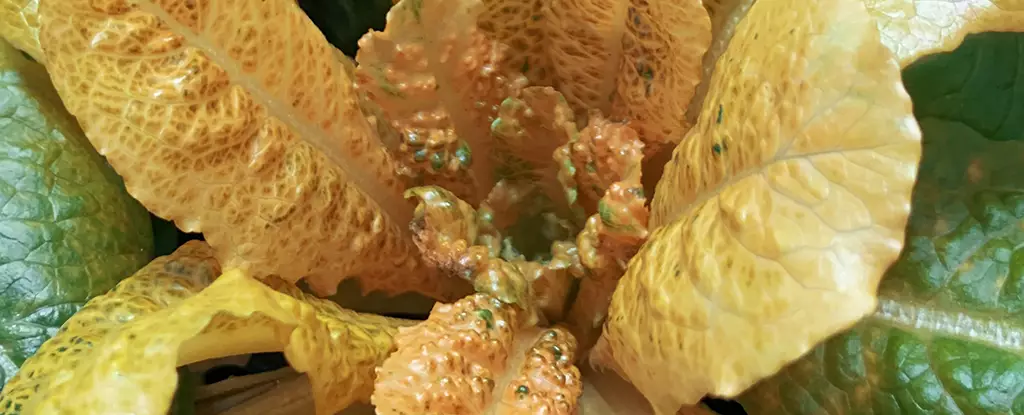The intersection of biotechnology and nutrition stands to revolutionize the way we approach dietary health and food production. One of the most exciting breakthroughs in this field is the development of ‘golden lettuce’ by a research team led by Valencia Polytechnic University (UPV) in Spain. This genetically engineered lettuce boasts significantly elevated levels of beta-carotene, a precursor to vitamin A. This innovative approach not only targets immediate health benefits but opens avenues for improving the nutritional profile of various vegetables in the future.
Vitamin A is an essential nutrient, particularly vital for functions such as immune response, vision, and the overall growth and development of individuals. Despite its importance, myriad populations worldwide suffer from vitamin A deficiency, leading to serious health consequences. Recognizing this dilemma, researchers sought to enhance the beta-carotene content in lettuce (Lactuca sativa) by leveraging genetic modification techniques.
Using complex biotechnological methods, the team first increased the beta-carotene levels in Nicotiana benthamiana, a close relative of tobacco, five-fold. This initial success paved the way for subsequent experiments on lettuce. However, the challenge lay in executing these modifications without disrupting the crucial photosynthesis processes of the plant.
The unique properties of chloroplasts—the green organelles responsible for photosynthesis—present conflicting requirements when it comes to increasing beta-carotene levels. According to molecular biologist Manuel Rodríguez Concepción from UPV, maintaining an appropriate balance is essential; excess or deficiency of beta-carotene can cause chloroplasts to malfunction, leading to plant death.
To overcome this challenge, researchers had to think innovatively, focusing on the distribution of beta-carotene within the plant’s cellular architecture. They effectively restructured certain chloroplasts into chromoplasts, which are specialized for pigment storage. This transformation was facilitated by introducing a bacterial gene, crtB, thus creating storage compartments beyond the chloroplasts where beta-carotene could accumulate safely.
In addition to genetic modifications, high-intensity light treatments played a vital role in enhancing beta-carotene accumulation. These treatments stimulated the formation of plastoglobules, fatty storage units within cells, which further boosted the production of beta-carotene. Molecular biologist Luca Morelli noted that this dual strategy not only increased the overall beta-carotene but also improved its bioaccessibility—the extent to which this compound is available for absorption in the intestines.
The nutritional transformation instigated by these interventions turns the lettuce a distinct yellow hue, effectively earning it the nickname ‘golden lettuce.’ This visual cue is both engaging and informative, signaling to consumers that they are engaging with a highly nutritious food source.
The implications of this breakthrough are profound, especially in light of a 2023 study revealing that vitamin A deficiency impacts hundreds of millions across the globe. As traditional food sources for this critical nutrient become limited or inaccessible in various regions, enhancing commonly consumed crops like lettuce presents a valuable alternative. By providing a readily available source of vitamin A, ‘golden lettuce’ could play a significant role in ameliorating global nutrition deficiencies.
Furthermore, the methodologies employed in developing this lettuce can potentially be applied to other vegetables, setting a paradigm for future agricultural biotechnology. By strategically modifying common crops, it is feasible to address myriad nutritional gaps worldwide, ensuring that more people have access to essential dietary components.
The creation of ‘golden lettuce’ marks a paradigm shift in our approach to combating nutritional deficiencies through agricultural innovation. With its enhanced beta-carotene content and the promise of improved health outcomes, it serves as a vital reminder of the significant role of biotechnology in addressing global health challenges. As research in this field continues to advance, we can anticipate a future where the foods we consume not only provide sustenance but also actively improve our health and well-being.


Leave a Reply